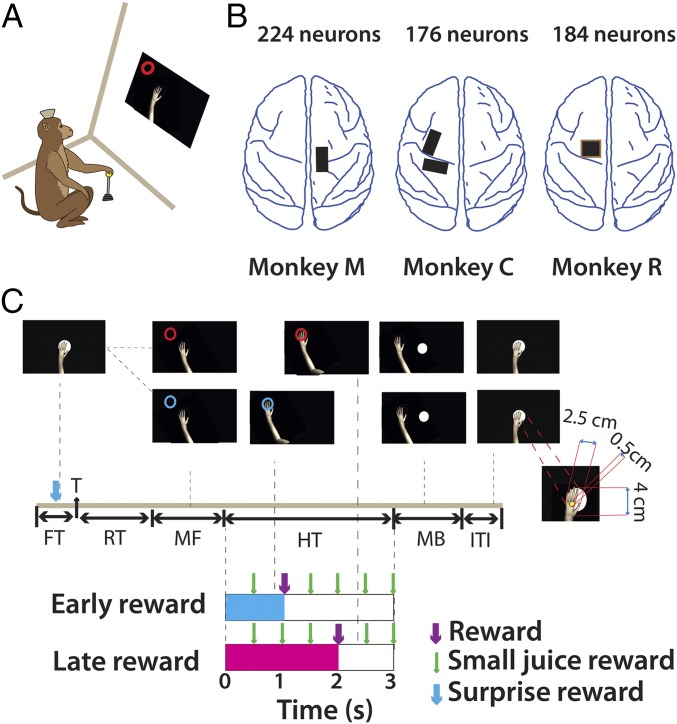Fig. 1.
Experimental setup and schematic of the paradigm. (A) Rhesus monkeys were trained to perform a center-out task using a custom-made hand-held joystick. Moving the joystick displaced an avatar monkey arm on the computer monitor. (B) Neural data were obtained from M1 neurons in three monkeys (monkeys M, C, and R) and S1 neurons in one monkey (monkey M) using chronically implanted arrays (black and brown rectangles). (C) Experiment schematic: Trial began when monkeys positioned the arm within the center target. Following fixation (FT), a circular target (T), red or blue, appeared at a distance of 9 cm from the center in one of eight target locations. Monkeys were trained to react quickly (RT) and acquire the target by moving the avatar arm (MF, movement forward). After reaching they held the arm at the target location for 3 s. A juice reward (R) was delivered either after 1 s (early reward) or after 2 s (late reward) into the hold time. Target color (blue vs. red) cued the monkey regarding reward time (early, cyan vs. late, magenta). Small juice rewards were given every 500 ms during the 3-s hold period (HT, hold time). At the end of the hold period, monkeys returned the arm to the center (MB, movement back). The next trial began after a brief intertrial interval (ITI). (Inset) The avatar monkey arm relative to a target-size disk. Note the cursor (0.5-cm yellow circle) has to be completely within the target to count as a successful “reach.” In Exp. 2, in 10% of the trials out of the total a surprise reward (SR) was given to the monkey before the target appeared.

